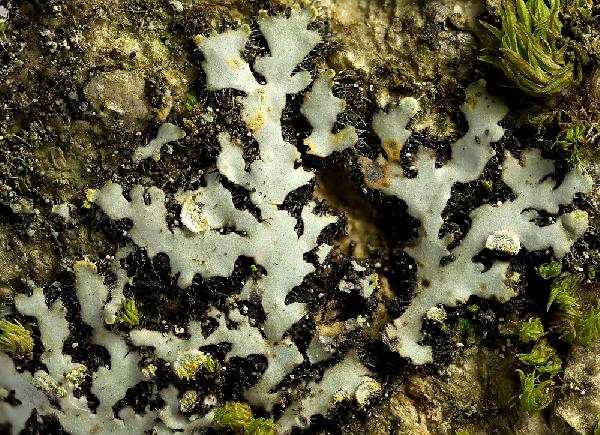Phaeophyscia endophoenicea (Harm.) Moberg
Symb. Bot. Upsal., 22, 1: 38, 1977. Basionym: Physcia obscura var. endophoenicea Harm. - Lich. de France, 4: 645, 1910 ("1909").
Synonyms: Physcia endophoenicea (Harm.) Sántha; Physcia labrata f. minor Mereschk.; Physcia labrata sensu Frey non Mereschk.; Physcia labrata var. endophoenicea (Harm.) Mereschk.; Physcia ocellata Erichsen
Distribution: N - VG (Carvalho 1997), Frl, Ven (Nascimbene 2008c), TAA (Ceccon & al. 2009), Lomb (Zocchi & al. 1997), Piem (Isocrono & Ferrarese 2008), Emil (Bassi 1995, Fariselli & al. 2020), Lig (Brunialti & al. 1999, Giordani & Brunialti 2000, Brunialti & Giordani 2003, Benco & al. 2004, Giordani & Incerti 2008, Masson 2008). C - Tosc (Tretiach & Nimis 1994, Putortì & al. 1999c, Paoli & Loppi 2001, Benesperi & al. 2007, Benesperi 2011, Frati & Brunialti 2023), Marc (Nimis & Tretiach 1999), Laz (Nimis & Tretiach 2004), Abr (Nimis & Tretiach 1999, Masson 2008, Corona & al. 2016), Mol (Nimis & Tretiach 1999, Caporale & al. 2008, Paoli & al. 2015, Brackel 2020). S - Camp (Nascimbene & al. 2010b, Brunialti & al. 2013, Ravera & Brunialti 2013), Pugl (Nimis & Tretiach 1999, Masson 2008), Bas (Potenza & al. 2014), Cal (Puntillo 2011).
Description: Thallus foliose, heteromerous, dorsiventral, narrow-lobed, closely adnate in the center, forming orbicular to more commonly irregular, 1-3 cm wide rosettes. Lobes grey to pale brown in sun-forms, (0.6-)1-1.5(-2) mm broad, dull to weakly shiny, epruinose, ascending at tips, with terminal, labriform soralia (laminal soralia often also present), the soredia often yellowish to reddish due to the exposed medulla, farinose, individual soredia mostly <40 µm in diam. Lower surface black, with abundant, black, simple rhizines. Upper cortex paraplectenchymatous, >22 µm thick; medulla yellow to orange-red in lower part, rarely white throughout; lower cortex paraplectenchymatous. Apothecia rare, lecanorine. Epithecium brown; hymenium and hypothecium colourless; paraphyses slender, often forked in upper part, the apical cells clavate, with a thin dark cap. Asci 8-spored, clavate, the K/I+ blue tholus penetrated by a faintly amyloid apical cushion with parallel or diverging flanks, the wall K/I-, surrounded by a K/I+ blue outer layer, Lecanora-type. Ascospores 1-septate, brown, ellipsoid, Physcia-type, 23-28 x 9-11 µm. Pycnidia rare. Photobiont chlorococcoid. Spot tests: cortex K-, C-, KC-, P-; soralia and medulla often K+ red. Chemistry: medulla usually with skyrin, without fatty acids. Note: a mild-temperate lichen found on epiphytic bryophytes and bark in open, humid woodlands; specimens without the red pigment in the medulla, which are not rare, can be easily confused with other species.
Growth form: Foliose, narrow lobed
Substrata: bark
Photobiont: green algae other than Trentepohlia
Reproductive strategy: mainly asexual, by soredia, or soredia-like structures (e.g. blastidia)
Commonnes-rarity: (info)
Alpine belt: absent
Subalpine belt: absent
Oromediterranean belt: absent
Montane belt: extremely rare
Submediterranean belt: very rare
Padanian area: absent
Humid submediterranean belt: rare
Humid mediterranean belt: very rare
Dry mediterranean belt: absent
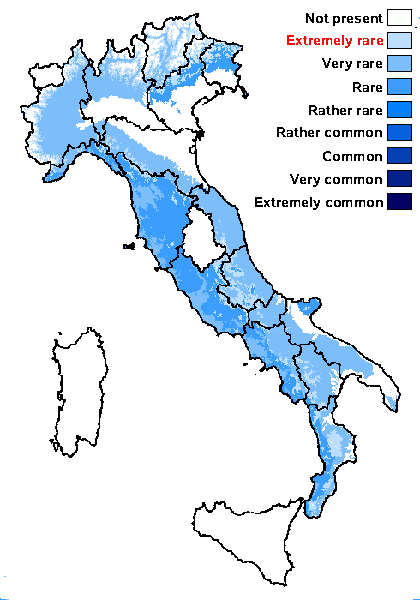
Predictive model
Herbarium samples


Felix Schumm – CC BY-SA 4.0
[14937], Germany, Baden-Württemberg, Kreis Esslingen, Weilheim, an Obstbäume am Fuß der Limburg, 450 m
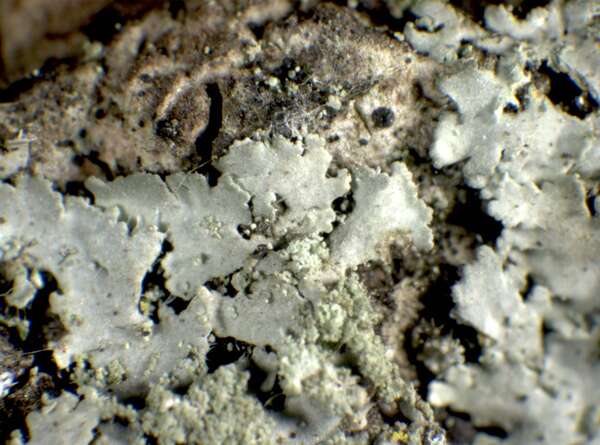

P.L. Nimis; Owner: Department of Life Sciences, University of Trieste
Herbarium: TSB (34305)
2001/12/10
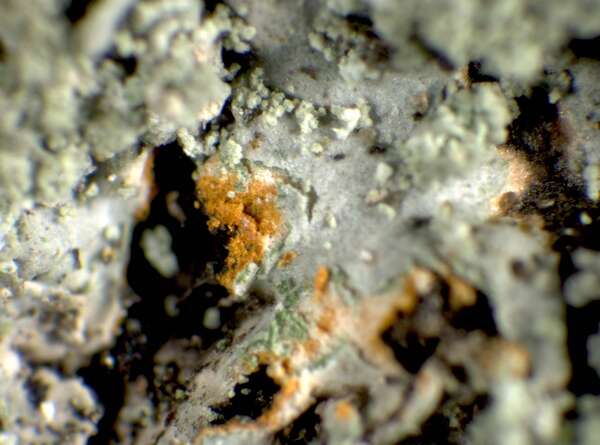

P.L. Nimis; Owner: Department of Life Sciences, University of Trieste
Herbarium: TSB (34305)
2001/12/10
detail of orange medulla
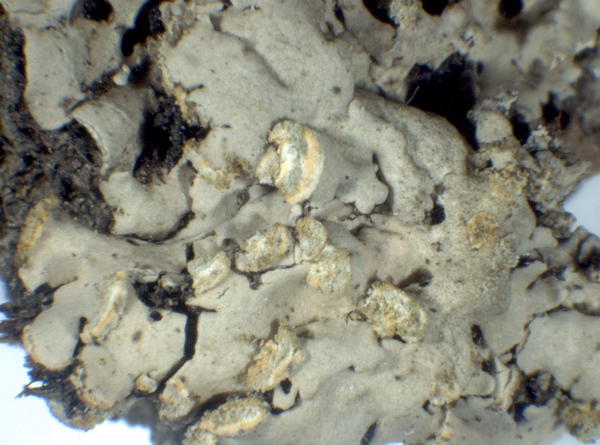

P.L.Nimis; Owner: Department of Life Sciences, University of Trieste
Herbarium: TSB (31082)
2008.03.06
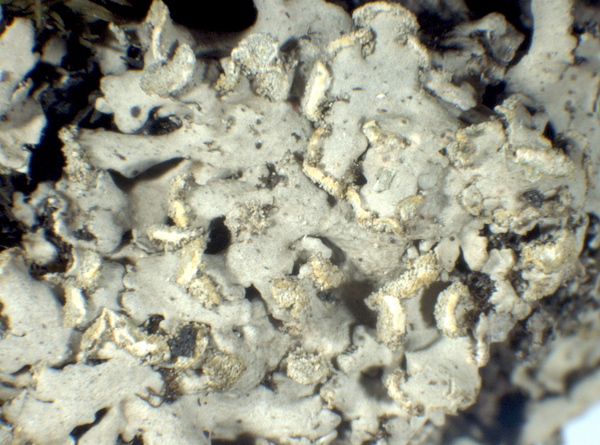

P.L.Nimis; Owner: Department of Life Sciences, University of Trieste
Herbarium: TSB (31082)
2008.03.06
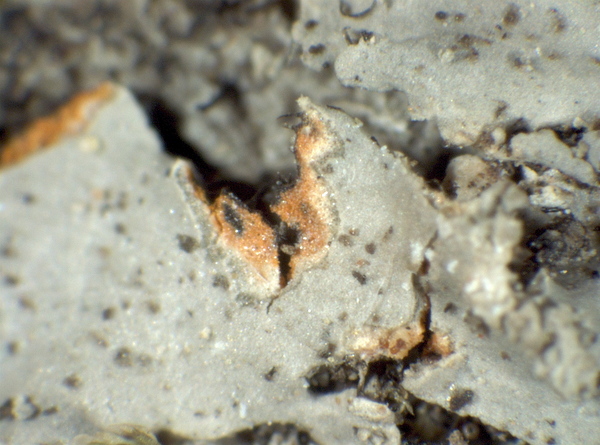

P.L.Nimis; Owner: Department of Life Sciences, University of Trieste
Herbarium: TSB (31082)
2008.03.06
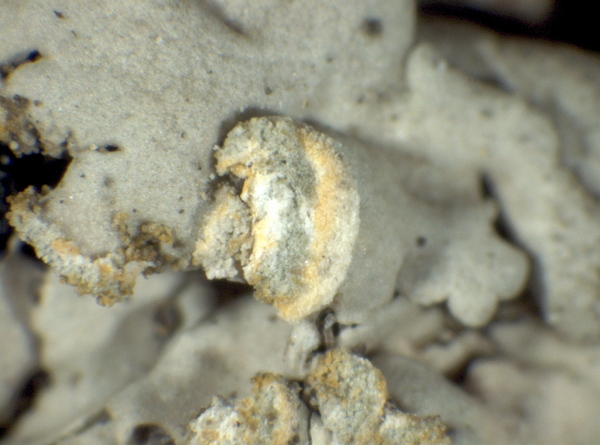

P.L.Nimis; Owner: Department of Life Sciences, University of Trieste
Herbarium: TSB (31082)
2008.03.06
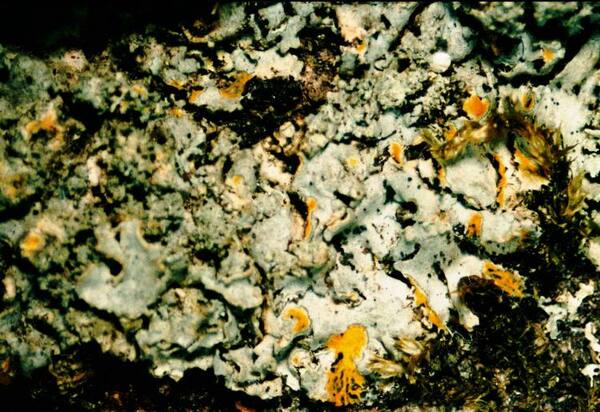
Ed Uebel; Owner: Ed Uebel – Wikimedia Commons – CC BY-SA 3.0 Unported
Growing on bark of Sugar Maple in open woods at Pellston Campground, N side of Robinson Road, Emmet County, Michigan, USA; collected and indentified by Richard E. Riefner (No. 81-270, 26 Jun 1981); specimen is now in the Lichen Herbarium of the New York Botanical Garden.
Growth form: Foliose, narrow lobed
Substrata: bark
Photobiont: green algae other than Trentepohlia
Reproductive strategy: mainly asexual, by soredia, or soredia-like structures (e.g. blastidia)
Commonnes-rarity: (info)
Alpine belt: absent
Subalpine belt: absent
Oromediterranean belt: absent
Montane belt: extremely rare
Submediterranean belt: very rare
Padanian area: absent
Humid submediterranean belt: rare
Humid mediterranean belt: very rare
Dry mediterranean belt: absent

Predictive model
| Herbarium samples |


Felix Schumm – CC BY-SA 4.0
[14937], Germany, Baden-Württemberg, Kreis Esslingen, Weilheim, an Obstbäume am Fuß der Limburg, 450 m


P.L. Nimis; Owner: Department of Life Sciences, University of Trieste
Herbarium: TSB (34305)
2001/12/10


P.L. Nimis; Owner: Department of Life Sciences, University of Trieste
Herbarium: TSB (34305)
2001/12/10
detail of orange medulla


P.L.Nimis; Owner: Department of Life Sciences, University of Trieste
Herbarium: TSB (31082)
2008.03.06


P.L.Nimis; Owner: Department of Life Sciences, University of Trieste
Herbarium: TSB (31082)
2008.03.06


P.L.Nimis; Owner: Department of Life Sciences, University of Trieste
Herbarium: TSB (31082)
2008.03.06


P.L.Nimis; Owner: Department of Life Sciences, University of Trieste
Herbarium: TSB (31082)
2008.03.06

 Index Fungorum
Index Fungorum
 GBIF
GBIF
